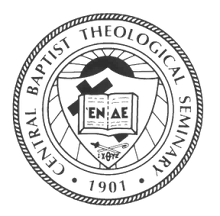God in creation, redemption, and consummation. The Trinity is a beautiful depiction of the hospitality, diversity, and creativity of the divine life--which heaven cannot contain.
Celebrating Trinity Sunday a week after Pentecost displays the liturgical wisdom of the church, for the sending, coming, and abiding of God has now come fully into view.
 The
Spirit has come in power, fulfilling the promise of Jesus, and the
threefold manifestation of God has created a new way to envision the
presence and power of God. Crafters of the lectionary struggle to align
texts that point toward a biblical vision of the triune God; perhaps it
is best to acknowledge that the doctrine of the Trinity looms in
outline in the Scripture, but is not fully developed. Yet, as Moltmann
contends, the logic of the Bible is intrinsically trinitarian as it
narrates the unfolding of God's history with creation. From the early
centuries until now, the church has pursued language--metaphorical and
allusory--which would point beyond itself to the mystery of the dynamism
of God's life both internally and with us.
The
Spirit has come in power, fulfilling the promise of Jesus, and the
threefold manifestation of God has created a new way to envision the
presence and power of God. Crafters of the lectionary struggle to align
texts that point toward a biblical vision of the triune God; perhaps it
is best to acknowledge that the doctrine of the Trinity looms in
outline in the Scripture, but is not fully developed. Yet, as Moltmann
contends, the logic of the Bible is intrinsically trinitarian as it
narrates the unfolding of God's history with creation. From the early
centuries until now, the church has pursued language--metaphorical and
allusory--which would point beyond itself to the mystery of the dynamism
of God's life both internally and with us.While not established as Christian orthodoxy until the Nicene Creed of 325 c.e., early prayers, biblical doxologies, and baptismal practice all pointed to the richness of divine life lived in community. One of the great images of that of dance, first proposed by creative theologians of the fourth century, the Cappadocians. The term perichoresis (meaning to dance around together) depicts a relationship of mutuality in which persons draw their identity from their dynamic relationship. It is an ecstatic dance in which the trinitarian persons literally "stand outside themselves" as they evoke the life of their divine counterparts. This movement calls forth the reciprocal sharing of life. Maybe it is time some Baptists learn to dance!
Why does this ancient doctrine matter to generations little concerned with technical theological language? It is because the triune rhythms of God's life tell the truth about who God is and tell the truth about who we are. We are persons who long for community; God models how self-giving love establishes identity. God is eternally sending forth the Spirit and Son, granting Breath and Word to creation so that life and understanding might flourish.
We are persons who know deeply our failures and our feelings of being unacceptable to God and others; Jesus comes to those who know their need proclaiming welcome and forgiveness. We are persons who require guidance to live in ways that move beyond narcissism to humility; the Spirit abides with and transforms us for participation in God's mission throughout the earth.
As Baptists are growing in their understanding of the Christian year, I would urge deepened engagement with trinitarian theology for its promise for congregational life. The church is called to be an "icon of the Trinity," and our practices in worship, service, and fellowship are grounded and sustained by the eternal flowing of the divine life.
Molly T. Marshall
The community of Central Baptist Theological Seminary is perichoretic as we embody trinitarian virtues of hospitality, diversity, and creativity. To learn more, continue visiting our website.

No comments:
Post a Comment